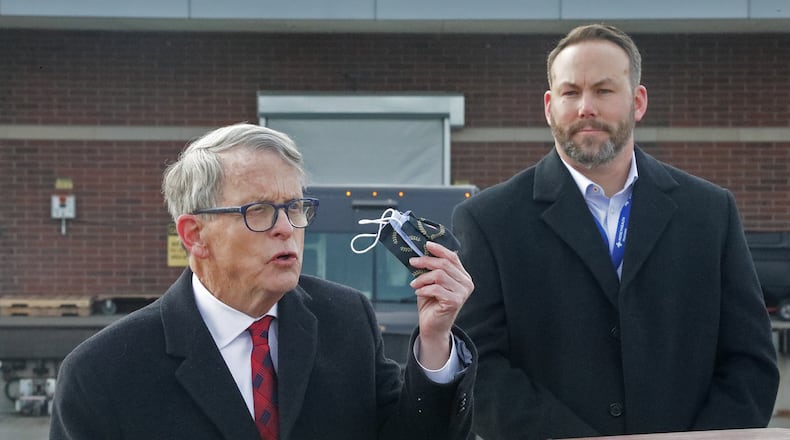With 83 counties red, or at level 3, DeWine has started to pay more attention to the state’s list of coronavirus occurrence rates.
“I want to try and pull people a little bit away from this map and more focus on what’s going on in your county,” he said Thursday. “This map system was very good, and I think it gave us early warnings. It really told a story as we moved through to here. But now with virtually everything red, we’re seeing the only movements between purple and red.”
He noted that counties moving from purple (level 4) to red (level 3) isn’t necessarily a sign of improvement, but that the county is plateauing.
“Red and purple are not all that different,” DeWine said. “They both mean that a county has a very high level of cases and a very high level of COVID activity in the health care system. Purple simply indicates counties where things are worsening noticeably, but red counties are also at very worrisome and unsustainable levels.”
If you want to see what the risk is in your county, look at this chart. Every county is at least 3x what the CDC considers high incidence. pic.twitter.com/rFbrP0eIjM
— Governor Mike DeWine (@GovMikeDeWine) December 17, 2020
As of Thursday, the entire Miami Valley is red. Miami County was placed on the level 4 watch list, meaning it could go to purple next week if it does not improve.
If a resident wants to look at the risk of coronavirus in their community, they should look at the occurrence rate and hospitalizations, DeWine said.
Wyandot County has the highest occurrence rate in the state, with 1,318.2 cases per 100,000 people from Dec. 2-15, according to the Ohio Department of Health.
That’s more than 13 times the CDC definition of high incidence.
All of Ohio’s 88 counties are considered high incidence.
“Every county very sadly is at least three times the number of cases the CDC requires for the county to be considered high incidence,” the governor said.
The Miami Valley is reporting the following occurrence rates as of Thursday:
- Warren County: 988.9 cases per 100,000 (13th in the state)
- Darke County: 984.1 cases per 100,000 (14th in the state)
- Butler County: 929.7 cases per 100,000 (25th in the state)
- Miami County: 924.4 cases per 1000,000 (26th in the state)
- Montgomery County: 862.9 cases per 100,000 (44th in the state)
- Greene County: 860.7 cases per 100,000 (45th in the state)
- Clark County: 858.4 cases per 100,000 (47th in the state)
- Preble County: 804.8 cases per 100,000 (56th in the state)
- Logan County: 762 cases per 100,000 (63rd in the state)
- Champaign County: 545.2 cases per 100,000 (82nd in the state)
About the Author
